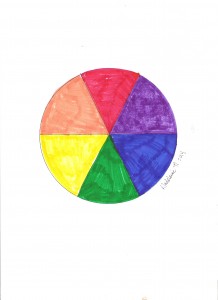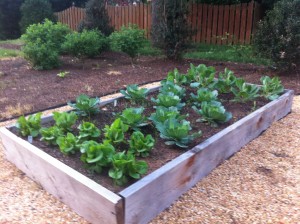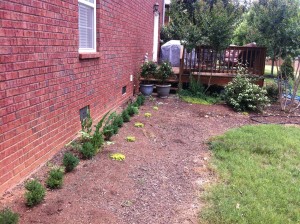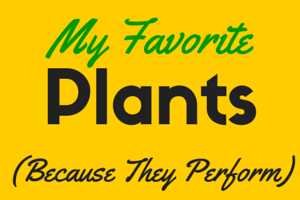Colors define the landscape. When you think about a memorable landscape, color is always remembered.
Start With Green
Pros repeat colors throughout a landscape. It starts with your home. If it has blue accents in red brick, consider blue gray green evergreens. They’ll look great.
What is your shutter color? What is your roof color? What is your trim color? Make your landscape match these or compliment.
Pick Your Three Favorite Colors
Determine your favorite colors you want to see in your landscape. This is one of the most important decisions you make. My personal favorites are pink, purple, blue, and white.Designers classify colors in two categories.
Hot Colors
If they are hot like red, pink, or orange, they scream energy and passion. They say Let’s Go! They increase energy level to the viewer. They exude passion and get the blood flowing.
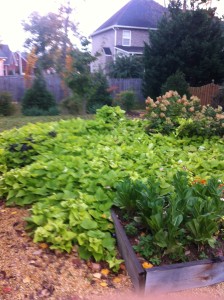
Lime Yellow sweet potato vine (Margarite) is a hot color that catches the eye. Notice the green lettuce is calming.
Cool Colors
Cool colors like blue, white, and purple are calming. They reflect tranquility and peacefulness. Cool colors relax you while hot colors entice. Mixing the two like choosing two cools and one hot color create a juxtaposition. They fight.
An easy way to determine a professional design from an amateur is to count the colors. Is there order and consistency? Or is every color under the rainbow used? It’s not imperative that only three colors are used, but it’s pleasing to the eye. Here are basic guidelines to color choice.
- Choose two or three hot/cool colors and one opposite cool/hot color
- Base your landscape around the selected colors. Search plants that contain these colors.
- Don’t forget green! There is blue-green, grey-green, lime-green, dark green, etc. It’s fine to mix different kinds of green throughout your landscape
- Consider having a hot color landscape in the sunny part of the yard. Cool colors work great in the shade.
- Blue is the rarest color found in plants.
- Pink, purple, and white are found in hundreds, if not thousands of flowers.
- Don’t ignore foliage. Trees can have purple leaves and many plants have interesting foliage colors like the annual Coleus.
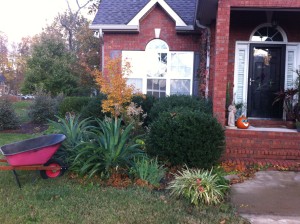
The blue agave and dark green Japanese holly match the blue-gray roof and shutters. The yellow leaf coral bark Japanese Maple is the hot color.
Realize that it’s ok to choose every color, but a professional designer wouldn’t do this. Understand that creates a lot of color for the eye to take in and it can seem overwhelming. As long as you like it, it’s perfectly fine.
